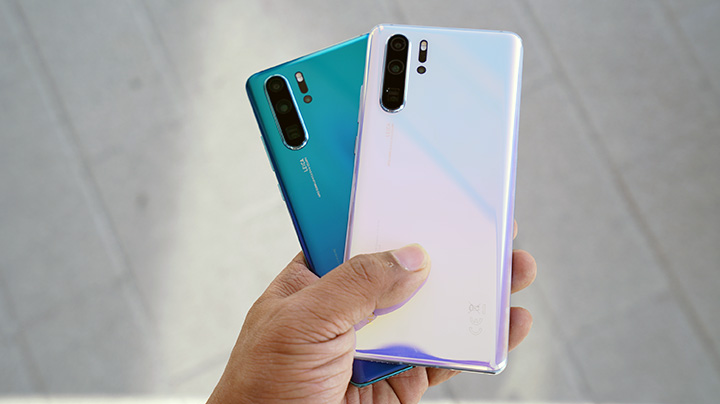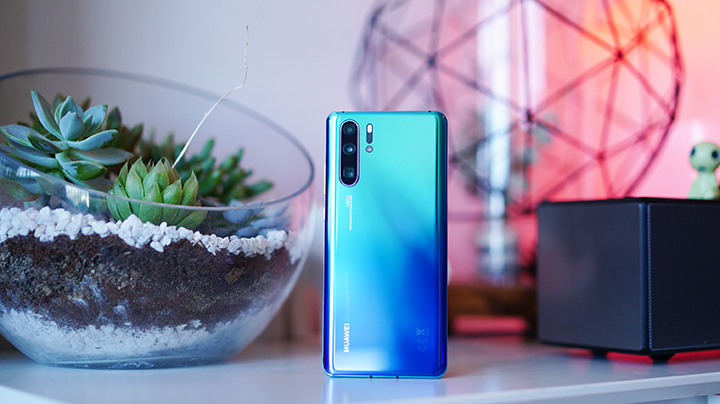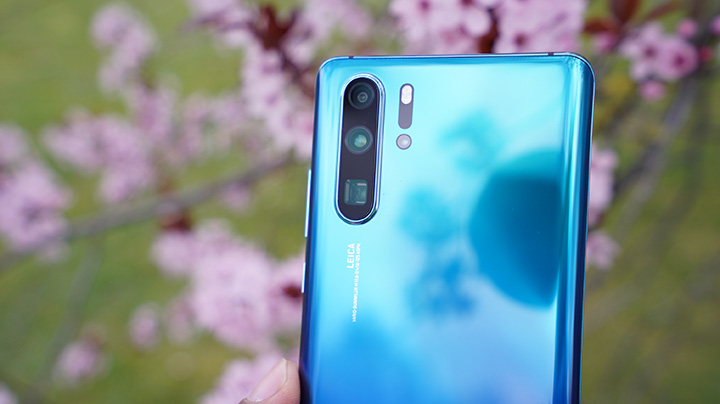For the past couple of years, Huawei is among the top phone brands that a lot of people are looking forward to. Dare we say, it has made its way to the calibers of Apple and Samsung. Huawei’s Mate series and P series smartphones are at par, and in some aspects even surpass, the Galaxy S series and Apple’s iPhone.

So when the P30 series was launched, everyone is expecting something impressive. And impressive is what we got. In this review, we focus on the hero product — the Huawei P30 Pro.
Table of Contents
There is not much that Huawei did on the P30 Pro in terms of design compared to its predecessor. For the most part, there were a few improvements and polishes done here and there.

The P30 Pro is a bit taller and thinner, compared to the P20 Pro, but the over-all construction is the same. There were some similarities inherited from the Mate20 Pro as well, like the curved glass, tapered edges and under-display fingerprint sensor but that’s about it.

Up at the front, they reduced the size of the notch, just enough so it can accommodate the front-facing camera. Button placements at the right side include the volume rocker and the power button.

There’s an IR blaster up top along with the noise-canceling mic. Down below are the Type-C port, speaker grills, primary mic and the SIM slot.

Again, Huawei has omitted the 3.5mm audio port in the P30 Pro. There are antenna bands at the top and bottom ends but those were carefully placed not to be very conspicuous.
Huawei also removed the loudspeaker in favor of an embedded speaker system.

At the back, you have that signature P series design that’s laid out horizontally giving way to a 4-camera setup, 3 of which are stacked together and a 4th one just below the LED flash. There’s a Leica branding beside the camera module and Huawei logo across it.

The entire body is constructed in polished metal with a layer of glass on top for protection, perhaps provided by Gorilla Glass.
Despite the slightly larger size, the P30 Pro is still comfortable to hold with one hand although a bit slippery due to the smooth finish. It’s also fingerprint and smudge-magnet. Good thing they included a jelly case just for added protection right out of the box.

The under-display fingerprint sensor has been repositioned much closer to the chin so it is easier to reach compared to the one on the Mate20 Pro. Typing or even dialing a number can be a bit of a challenge with one hand but that’s subjective to the user already.
In many ways, it seems like the design of the P30 Pro and Mate20 Pro are converging and both have a lot of similarities now.

The P30 Pro is also IP68 dust and water resistant, with wireless charging capabilities and reverse wireless charging feature.
The P30 Pro is now larger at 6.47-inches (even larger than the Mate 20 Pro) and uses an OLED display with a screen resolution of 2340 x 1080 pixels. That’s about 398ppi pixel density which is good enough though not in the range of other flagship devices.

Huawei has been conservative with going for 2K resolution although we’ve seen the Mate RS and Mate 20 Pro going there so it’s a bit confusing why they would stick to FHD on a Pro model. The argument about saving up on battery life is moot since there’s always that option to switch to a lower reso in the Settings menu.
Nevertheless, we’re still impressed with the quality of the OLED display. The display is bright, details are crisp and colors well saturated.
The glass display slightly curves toward the edges giving it better coverage and minimizes the thickness of the bezels. Then again, there’s also that water-drop notch, not a punch-hole design (we’re borrowing the term from Samsung) on the display that they’ve employed in the Nova 4. Perhaps, they think that a notch looks better than a punch-hole design. We don’t exactly know.

In any case, you can keep this as it is or cover the notch with a black border in the Display settings.
The entire display also serves are the earpiece, This is achieved by using vibrations from the beneath the display that creates the audible sound when you press your ear on the phone. It’s a neat trick that’s been used quite extensively by other vendors before.
The speaker grill found at the bottom end is where the primary sound comes from when you want to watch a movie or play music without an earphone (by the way, you will need a wireless one since there’s no 3.5mm audio port in here). Sound quality is great, loud and has a bit of oomph to it. Again, those are still looking for the 3.5mm audio port will not find it here and have to connect to an external speaker or earphones via Bluetooth/NFC. Otherwise, the box comes with a pair of earphones that has a Type-C plug.
Some camera phones focus on telephotos, others on a wide field of view and for the longest time, low-light capabilities. Huawei intends to pack all of these features into one camera system and the P30 Pro seems to be the poster boy for such ambitious goals.

The P30 Pro has a quadruple camera system which is composed of a 40-megapixel primary RYYB sensor with f/1.6 aperture, a secondary 20-megapixel sensor with f/2.2 ultra-wide angle, a 3rd 8-megapixel sensor with f/2.4 aperture and 5x optical zoom and a fourth depth-sensing ‘time-of-flight’ sensor.
The P30 Pro has two very impressive camera features that are getting a lot of attention. The first one is the zoom capability. With its 5x optical zoom, the camera can do a hybrid zoom of up to 10x and a digital zoom of up to 50x. That’s the farthest zooming capability we have seen on any camera phone. Granted that the 50x is just an optical zoom, the results are still very usable thanks to the 40MP sensor and the OIS features.
Just look at these examples:

The second camera feature is the ultra-low light capability. The P30 Pro has an equivalent ISO 409,600 sensitivity, which means it can practically see in the dark.
You can only see these levels of sensitivity in modern high-end dSLRs.

The camera is also able to record in 4K at 30fps. Here are some sample shots we took from France and Germany during the Huawei trip.
And if we are talking about low-light or night photography, nothing compares or even comes close to the P30 Pro.

These are all hand-held shots and we allowed the camera to shoot in auto mode.

In Pro Mode, you can go up to ISO 409600 but just looking at these sample photos with varying ISO levels, you can see how powerful this camera really is.
The P30 Pro runs on Android 9.0 Pie right out of the box with EMUI 9.1 layered on top. This is the typical user interface of Huawei that simplifies the Android experience but adds a lot of useful and practical productivity features.
By default, there is no app drawer which means all the apps are clustered in multiple home-screens of grouped into folders. You can revert back to the app drawer in the settings if that’s most to your liking. While the UI is simple and clean, there are a ton of options to choose from if you want to install custom theme in the Huawei theme store, some of which are free and others are paid.

There are some apps pre-installed in the device, including a native Health app, Optimizer, Smart Remote, HiCare, and a Phone Clone app that is very useful when you want to transfer the contents and settings of your old phone to your new P30 Pro (works flawlessly with Huawei phones). A bit of bloatware as well like the Booking.com app and a native Huawei browser instead of Chrome.
Huawei has added a lot of productivity features and other software features that are both useful and practical. Among them are the App Twin (two instances of apps like FB Messenger, WhatsApp, etc), option for Private Space as a second and completely separate working space from the Main Space, Huawei Share, Wireless Projection, and Smart Assistance for one-handed UI, motion control and voice control. We’re also glad that SwiftKey is integrated into the input system.

If you’re a Huawei user, you should also be familiar with some of the gesture shortcuts like a double-knock on the screen to take a full screenshot, drawing a pattern for a partial screenshot and drawing a letter to launch a pre-defined app. What we really liked is the ability to choose a custom navigation bar layout.
Our review unit has 256GB storage with the second nano-SIM that doubles as an NM card slot should you wish to add more up to 256GB additional storage space. There was also a 400MB software update within the day of using the device that fixes a lot of bugs in the system.
Powering the Huawei P30 Pro is a HiSilicon Kirin 980, the same chip found in the Mate20 Pro. The architecture consists of two high-performance cores based on an ARM Cortex-A76 (2.6GHz) to handle immediate, intensive workloads; two more high-efficiency cores based on the same Cortex-A76 (1.92GHz) to for sustained performance; and four ultra-efficient cores based on the Cortex-A55 (1.8GHz) to tackle everyday, light activities.

This combination of cores helps in providing a great balance between highly intensive workloads and low-power consumption of the device, making it run as optimal as possible.
The graphics engine is handled by a Mali-G76 GPU which offers 46% greater processing power and 178% improved power efficiency over the Kirin 970’s Mali-G72. It also features a clock boosting technology that utilizes AI to intelligently identify gaming workloads and adjust resource allocation for optimal gaming performance. Gaming experience is excellent, especially with the performance boost.

Here are the scores we got running our usual suite of synthetic benchmarks:
• Antutu Benchmark: 291,928
• PCMark: 9,883 (Work 1.0), 7,786 (Work 2.0)
• 3DMark: 3,977 (Sling Shot Extreme, Open GL 3.1), 4,048 (Sling Shot Extreme, Vulcan)
• GeekBench 4: 3,300 (Single Core), 9,858 (Multi-Core)
• AndroBench: 847 MB/s (Read), 250 MB/s (Write)
We noticed there were some drops in the benchmarks scores of the P30 Pro compared to the Mate20 Pro despite having the same chipset. This is revealed in the Antutu benchmark and the PC Mark scores but not in Geekbench and 3D Mark. As for the internal storage, sequential speeds are the same but the write speeds have significantly increased from just below 200MB/s to 250MB/s or a 25% jump.
Running all the high-intensive apps and heavy games was not a problem with the P30 Pro. The 8GB RAM supplies all the needed memory to load up and switch between multiple apps in a jiffy. Putting all graphics setting to the highest levels gave the best results without feeling any hiccups whatsoever.
Since the P30 Pro has the same chipset as the Mate20 Pro, it shares all the connectivity features of the latter. This includes fast dual-band WiFi, dual 4G support, Bluetooth 5.0, NFC and dual-band GPS for faster and more accurate location-tracking.

We also like that the device can connect to an external display or monitor via the USB Type-C 3.1 port using an HDMI cable. There’s also an option for wireless display, supported by Miracast.
Call quality is very good, reception is loud and clear and signal is fairly strong in both the WiFi and mobile connectivity.

The P30 Pro is packed with a large 4,200mAh internal battery so we’re expecting it to last quite well on moderate to heavy use. In our PC Mark Battery Test, the P30 Pro achieved a score of 13 hours and 13 minutes on a single full charge at 50% brightness, zero volume and in airplane mode. This is the highest score we have seen in all of the Huawei devices we have tested.

That’s a huge bump compared to the scores we got from the P20 Pro (4,000mAh @ 10 hours, 9 minutes) and the Mate20 Pro (4,200mAh @ 10 hours, 28 minutes). In our standard video loop test (full HD movie at MP4 format), the phone managed to last 21 hours and 40 minutes of continuous playback under the same conditions. There must be some serious optimization done with the P30 Pro considering they have the same chipset and battery as the Mate 20 Pro.
Aside from the fast charging that’s built into the battery tech, there’s support for fast wireless charging as well. Not only that, when you activate the Reverse Wireless Charging feature, you can also wirelessly charge other devices (smartphones, smartwatches, etc) by simply placing them on the backside of the P30 Pro.

This feature was originally introduced in the Mate20 Pro and was inherited by the P30 Pro. This is not a gimmick though as we’ve had several instances where a friend badly needs a quick charge and there’s no powerbank available, thus the reverse wireless charging became handy.
The included 40W Huawei SuperCharge allows the device to charge up to 70% in just 30 minutes, although a full charge from zero to 100% will still need somewhere around 70 minutes to fully complete. That’s still a feat considering the large 4,200mAh battery.
Huawei is trying really hard to impress and impressed us it did. The P30 Pro exceeded our expectations and then some. It’s huge in almost every aspect — display, performance, camera, battery and charging technology. If we had to nitpick, and that’s pushing it already, we can only think of the screen resolution to have been bumped to 2k at the very least. But that’s just it — we’re nitpicking.

Everything else is what we expected it to be and in some aspects, exceeded our expectations. It’s truly a powerhouse in the literal sense of the term. With the P30 Pro, Huawei is hard to ignore as the smartphone that will set the flagship standards for 2019. And rightfully so.
The Huawei P30 Pro has a suggested retail price of Php50,990USD 869INR 73,660EUR 828CNY 6,328 with the Huawei Watch GT as a bundled freebie during the pre-order period between April 5 and 12, 2019.

Huawei P30 Pro specs:
6.47-inch FHD+ OLED display @ 2340 x 1080px, DCI-P3 HDR
HiSilicon Kirin 980 2.6GHz octa-core (Dual NPUs)
2 x ARM Cortex-A76 2.6GHz + 2 x Cortex-A76 Based 1.92 GHz + 4 x Cortex-A55 1.8 GHz
8GB DDR4 RAM
128GB/256GB/256GB internal storage
Dual SIM card w/ NM Card
Dual 4G VoLTE
40MP f/1.6 OIS RYYB (World’s first) + 20MP f/2.2 ultra-wide-angle + 8MP f/2.4 w/ 5x Periscope(5X Optical Zoom, 10X Hybrid Zoom, 50X Digital Zoom) and Time-of-Flight technology
Dual OIS (Main lens OIS + Telephoto OIS)
up to ISO 409600, Professional Night Mode, Huawei AIS, AI HDR+
Dual-View Video (wide-angle and close up view video recording)
32MP front camera
WiFi 802.11a/b/g/n/ac (2.4GHz, 5GHz)
Bluetooth 5.0, BLE, SBC, AAC, aptX, aptX HD, LDAC, HWA Audio
GPS/ A-GPS/ Glonass/ BeiDou/ Galileo/ QZSS
NFC
USB Type-C
IP68 water and dust resistance
Dolby Atmos speakers
In-screen fingerprint scanner (New generation)
EMUI 9.1 (Android 9 Pie)
4,200mAh battery with 40W SuperCharge technology, 15W Wireless Quick Charge, Wireless Reverse Charge
192 grams (weight)
Breathing Crystal, Amber Sunrise, Pearl White, Classic Black, Aurora
What we liked about it:
* Beautiful curved OLED display
* Impressive performance
* Very nice design and build quality
* Impressive quad-camera camera system
* Very long battery life
* Fast wired and wireless charging
* Reverse wireless charging
What we did not like:
* Quite expensive

YugaTech.com is the largest and longest-running technology site in the Philippines. Originally established in October 2002, the site was transformed into a full-fledged technology platform in 2005.
How to transfer, withdraw money from PayPal to GCash
Prices of Starlink satellite in the Philippines
Install Google GBox to Huawei smartphones
Pag-IBIG MP2 online application
How to check PhilHealth contributions online
How to find your SIM card serial number
Globe, PLDT, Converge, Sky: Unli fiber internet plans compared
10 biggest games in the Google Play Store
LTO periodic medical exam for 10-year licenses
Netflix codes to unlock hidden TV shows, movies
Apple, Asus, Cherry Mobile, Huawei, LG, Nokia, Oppo, Samsung, Sony, Vivo, Xiaomi, Lenovo, Infinix Mobile, Pocophone, Honor, iPhone, OnePlus, Tecno, Realme, HTC, Gionee, Kata, IQ00, Redmi, Razer, CloudFone, Motorola, Panasonic, TCL, Wiko
Best Android smartphones between PHP 20,000 - 25,000
Smartphones under PHP 10,000 in the Philippines
Smartphones under PHP 12K Philippines
Best smartphones for kids under PHP 7,000
Smartphones under PHP 15,000 in the Philippines
Best Android smartphones between PHP 15,000 - 20,000
Smartphones under PHP 20,000 in the Philippines
Most affordable 5G phones in the Philippines under PHP 20K
5G smartphones in the Philippines under PHP 16K
Smartphone pricelist Philippines 2024
Smartphone pricelist Philippines 2023
Smartphone pricelist Philippines 2022
Smartphone pricelist Philippines 2021
Smartphone pricelist Philippines 2020
Freeje says:
A better option than the iPhone unless you’re a fanboy.
mema says:
shutter speed : 2sec
ISO: 800
and shoot at sky at night time, kung may mga bitwin pde yan pangtapat sa DSLR cameras